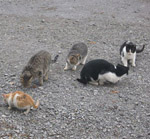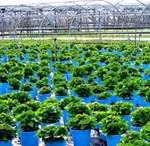Shade-grown coffee: the benefit for wintering migratory birds
 Agriculture,
Agriculture,  Birds
Birds  Cerulean warbler (Dendroica cerulea).A new study finds that shade grown coffee plantations in the Venezuelan Andes provide high quality wintering habitat for neotropical migratory birds on par with primary forests.
Cerulean warbler (Dendroica cerulea).A new study finds that shade grown coffee plantations in the Venezuelan Andes provide high quality wintering habitat for neotropical migratory birds on par with primary forests.
This is good news for the cerulean warbler, a breeding bird from the Eastern United States that has seen severe population declines recently.
The study provided the first nonbreeding demographic estimates for the threatened bird. Population densities for the cerulean warbler were 14x higher in shade coffee plantations than primary forest. Also the estimated monthly survival rate was very high (approximately 97%) and its body condition improved significantly throughout the winter months.
The study found similar findings for Tennessee warblers and American redstarts. The study authors highlight the importance of these findings:
"Our study is the first to provide evidence of improved body condition of migratory species that overwinter in shade coffee plantations. The ability of migrants to maintain or improve body condition on wintering grounds has important demographic consequences, as high overwinter condition promotes early arrival on breeding grounds, breeding success, and annual survival."
The researchers conducted mist-netting and banding in the plantations to evaluate changes in avian body condition and apparent monthly survival. They also used distance-based line transects to estimate density of wintering migrants in both primary forest and shade coffee plantations. The distance-based method is important because it takes into account detection bias (i.e. observing birds is more difficult in vegetation-dense primary forest compared to open canopy shade coffee plantations).
The study recorded 325 individuals from 17 species in shade coffee plantations compared to 114 sightings from 15 species observed in primary forest. Detection adjusted density estimates for the four most common species ranged from 3 to 14x higher in coffee plantations. This study is the first to compare bird density in primary forests and shade coffee plantations adjusting for detection bias.
These results highlight the importance of shade coffee systems in providing wintering habitat for neotropical migratory birds. This is especially true given that the montane forests of the northern Andes have suffered from very high rates of deforestation.
Unfortunately, shade coffee plantations have been declining as well. The authors write:
"The traditional agroforestry practice of growing coffee in plantations with a diverse canopy of trees is being lost in many parts of Latin America as farmers switch to
intensive and less environmentally friendly sun coffee plantations and pasture. For example, approximately 40–50% of all shade coffee plantations in Latin America were converted to sun coffee by the 1990s."
The fate of the cerulean warbler and other birds may rest on whether this trend changes.
--Reviewed by Rob Goldstein
Bakermans, M., Vitz, A., Rodewald, A., & Rengifo, C. (2009). Migratory songbird use of shade coffee in the Venezuelan Andes with implications for conservation of cerulean warbler Biological Conservation, 142 (11), 2476-2483 DOI: 10.1016/j.biocon.2009.05.018




Reader Comments